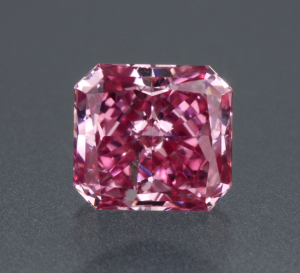 When choosing a gemstone for everyday wear, it is important to know how your gemstone is going to hold up against encounters with countertops, doorknobs, suitcase handles, and the myriad other hard surfaces that rings, bracelets, and other gemstone items unwittingly come into contact with. Even gemstones that rank high on the Mohs scale of hardness may not be as durable as you think. Read on for expert suggestions on how to best wear your gemstones in order to get longevity out of your gem collection.
When choosing a gemstone for everyday wear, it is important to know how your gemstone is going to hold up against encounters with countertops, doorknobs, suitcase handles, and the myriad other hard surfaces that rings, bracelets, and other gemstone items unwittingly come into contact with. Even gemstones that rank high on the Mohs scale of hardness may not be as durable as you think. Read on for expert suggestions on how to best wear your gemstones in order to get longevity out of your gem collection.
Hardness Isn’t Everything
As a general rule, you can expect that a gemstone with a Mohs scale ranking of seven or higher will be suitable to wear every day. The hardest gemstones such as diamonds, rubies, and sapphires will not show wear and tear nearly as soon as other gemstones. Signs of wear in gemstones include abraded facet junctions, scratches, and chips. You may begin to see signs of wear in gemstones with a Mohs ranking of seven or eight if the gemstone is in jewelry that regularly comes into contact with hard surfaces when worn every day. Here is a short list of popular gemstones with a Mohs ranking of seven or higher:
- Diamond (10)
- Ruby (9)
- Sapphire (9)
- Spinel (8)
- Topaz (8)
- Cat’s Eye (8)
- Chrysoberyl (8)
- Alexandrite (8)
- Garnet (7)
- Tourmaline (7)
- Quartz (7)
- Peridot (7)
- Emerald (7)
- Chalcedony (7)
- Aquamarine (7)
- Carnelian (7)
- Bloodstone (7)
- Agate(7)
All of these gemstones are resistant to scratching, but hardness is not your only consideration when selecting a gemstone for everyday wear.
Toughness Does Matter
Minerals are some of the hardest substances found on Earth. So why do many hard gemstones seem so fragile? The reason is that even though a gemstone is hard, it might not be so tough! The definition of hardness is the resistance to scratching that a material possesses. Toughness is the strength of the material: how much force it can absorb before it breaks. Take emeralds for example. Ranking seven on the Mohs scale would seem to indicate that emeralds are very hard. But the numerous inclusions that are inherent to emeralds interfere with their toughness. This is not to say that you shouldn’t wear and emerald ring. It just means that you shouldn’t wear it while gardening or playing racquetball! Taking care of vulnerable gemstones means either wearing them mindfully, making sure that you do not engage in activities where they will be compromised, or just making sure that you reserve more delicate gems for pendants and earrings instead of rings and bracelets.
A Word on Durability
Diamonds are well known for being the hardest substance on earth. Nothing can scratch a diamond except for another diamond. But diamonds are also brittle and have excellent cleavage, meaning a blow at just the right (or wrong) place could potentially break a diamond cleanly in half! Think about gemstone durability in terms of a combination of hardness and toughness. Hard does not mean impervious to damage!
Now that you understand many of the factors that contribute to a gemstone’s overall durability, you can make suitable choices for your jewelry that will benefit its longevity. Are you surprised to learn that some gemstones are not as durable as they seem? Which fact did you find the most surprising?
